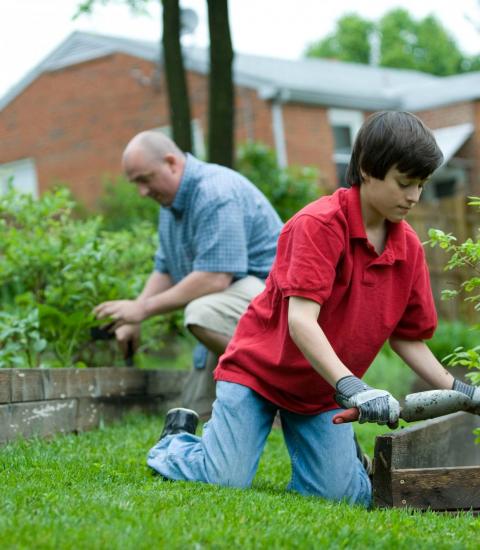
An important take home message about gardening and garden related activities is that as Charles Lewis suggested in 1985, in a world of constant judgment, plants are non-threatening and non-discriminating. No matter who you are, plants welcome and thrive on the care we provide them. They respond only to the attention that is given to them, not to race, ethnicity, gender, age, intellect, or physical capacities in the garden.
It makes good sense that when plants thrive, the gardener will as well. There is a well-research theory that supports this idea. Based on the concept of biophilia—that humans are drawn to connect with living organisms—it is difficult to be anything less than thrilled when under our care a plant sprouts, grows, and bears fruit and flowers. In fact, as I am writing this post, I came home last night from a week away to find that I have a ripe tomato and a plethora of sugar snap peas waiting for us to enjoy! Yet a longer lasting harvest can result when the garden serves as a backdrop to develop measurable goal-directed, well-rounded developmentally focused learning opportunities for children and the adults who love and care for them.
Here is a simple child - adult scenario. Gardens present an ideal opportunity to focus on cognitive- thinking skills in a purposeful and practical manner. Instead of working on math skills with work sheets with children, get your nature on! For instance, tasking a child to fill 2 baskets with 5 red bell peppers* in each basket starts with identifying the ripe (red) peppers and counting. It involves either looking at photos of red peppers and transferring this knowledge to the actual plant, or you, the adult, showing them real examples. It is more than math. Language skills can be enriched by talking about an array of basic plant names, colors, and preposition identification, all under the guise of gardening. If these lessons can happen in the garden, you gain the benefit of being outdoors, which research finds to support physical and mental health as well as learning. If outdoors is not possible, sit close to your indoor plants while talking about their qualities.
That said and I will say it and write about it often, gardens must first and foremost be designed to meet the needs of the widest range of users possible. This concept is the foundation for universal design. Garden beds need to be installed at different heights for sitting and standing gardeners that do not compromise their safety. Providing seating, shade, and water (for humans and plants!) and accessible—flat, smooth, and wide—paths are essential. Choosing garden tools suited to the gardener’s abilities without being cumbersome and awkward is another important consideration. If sensitively designed, gardens are places for people to gather, a ‘natural’ venue for socialization. They are places to explore, learn, and satisfy curiosity. They are places where everyone can make choices and be enriched. They are also a place for contemplation and for peace and serenity. Gardens can and should be for all!
*Use any fruit, vegetable, herb, leaf, or flower that is most convenient for you.
Revised from Wagenfeld, A. (2011). Growing healthy garden(ers). Leaflet, 28(4), 16.
